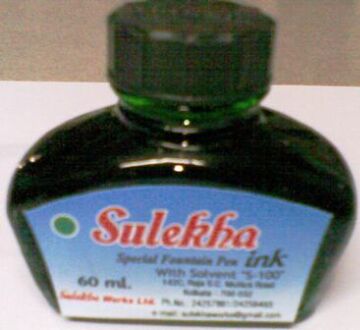Heritage ink from pre-Independent era back on stands

Kolkata: The country's first 'ink' hasn't dried up but has got a fresh lease of life. Sulekha ink, which has catered to thousands of people in the past nine decades, is back on stands. And, not a single drop adulterated! The manufacturers claimed to have used the same ingredients—which had made the ink so special during the pre-Independent era.
The manufacturers had stopped making it in 1979 following the labour unrest during the early regime of the then Left government. But, the production was restored five years back. And, now the heritage ink is back on the shelves.
The makers have come up with three varieties similar to the obsolete ones— Sulekha, Swadeshi and Swadhin. These are similar to ones used by Mahatma Gandhi.
"These ranges have been created using the same ingredients and implementing the same process which was used to manufacture the ink earlier," Kaushik Moitra, managing director of Sulekha, said.
Available in royal blue, executive black and scarlet red colours, the carafes are packed in a handmade pouch that has been recreated for the line and comes from Santiniketan.
The ink has been a part of Bengal's history since the 1930s. Thousands of students had used this ink to write their answer scripts for numerous examinations, including the state or Union Public Service Commission.
The company was set up at the insistence of Mahatma Gandhi, who had inspired a teacher of Presidency College to manufacture ink during the Civil Disobedience Movement.
It is believed that the name was given by Rabindranath Tagore, who was also in favour of setting up Indian industries. As in the initial days, the manufacturer used to hawk the ink himself; it was popularly known as 'Professor Moitrar kali (Ink of Professor Moitra)'.
Meanwhile, as a special gesture to the fountain pen lovers, the Sulekha management has decided to waive the courier charges within India for a period of three months, from November 15 to February 15, 2021. The variety will be exported to Bangladesh as a homage to Rajsahi, from where the ink started its journey.
The Swaraj line comprises inks in 10 colours, while the Swadhin line comprises two colours black and blue. Gandhi had requested the founding fathers to ensure that these two varieties reach the common people at an affordable price.



